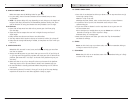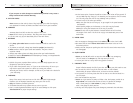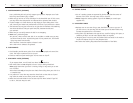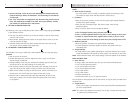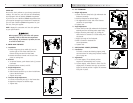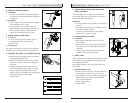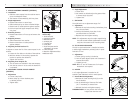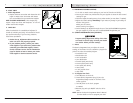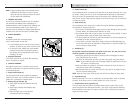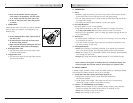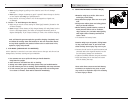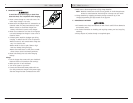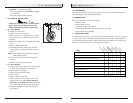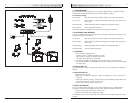
930578 Rev. B
XI. Batteries
39
A. INTRODUCTION
1. Notes:
• Batteries supply the power for your chair. They contain a finite amount of ener-
gy and have limits on how long they can store and supply energy.
• You can charge batteries only a certain number of times before they will fail and
no longer hold a charge.
• For answers to questions about batteries, consult your supplier.
2. Use Proper Batteries:
Your chair operates on two 12 volt batteries.
• They should be 22 NF or U1 size with a minimum of 30 ampere hour rating.
Only
deep cycle sealed case construction should be used in this device.
• When you buy a replacement, insist on a deep cycle sealed case type. Do not use
a car starter battery.
3. Breaking In:
• A battery requires “breaking-in” for the first 6 to 12 charges. It will not accept a
full charge for this period.
• It is best to limit the length of your trips until you break the batteries in and
you know the range of your chair.
4. Discharged Batteries:
• Never allow a battery to completely discharge. If you operate your wheelchair
until it has almost stopped, you will greatly reduce the life of your batteries.
•
Never let a battery sit in a discharged condition. Give unused or stored batteries
a full charge once per month.
•
Always fully charge the batteries. Avoid “topping off” with frequent charges.
Never connect a life support or auxiliary device to a wheelchair battery. The
electrical system may fail and result in severe injury to or death of rider.
B. BATTERY CHARGER
A battery charger produces a direct current (DC). When applied to a discharged battery,
this reverses the chemical reaction that led to its discharge.
1. Charge Rate. How fast a battery will charge depends on:
• Its electrical capacity; state of charge; electrolyte temperature;
and internal condition.
• The DC output of the charger. (The charge rate will vary if the alternating
current (AC) supply is higher or lower than 110 volts).
2. Caution — To Avoid Damage to the Charger:
• Never place the charger on top of a battery during charging. (Gases from the
battery can damage the charger and may lead to an explosion or fire).
•
Never place a battery on top of the charger.
•
Never expose charger to rain or snow.
X. Operating Guide
930578 Rev. B
38
1.Never use the ON/OFF switch to stop your
chair except in an emergency. This will result
in an abrupt stop and may cause you to fall.
2.To slow or stop your chair, return the joystick
to neutral.
F. MOTOR LOCKS
Disconnect the motor locks when you need to manually
push the chair. (For example, in an emergency, or if
batteries fail).
1.Do not disengage motor locks unless power to
the chair is off.
2.Be aware that the chair will not have brakes
in the free-wheel position.
3.Make sure that the person pushing the chair has
full control when motor locks are disengaged.
1. Disengage Motor Locks
a. Turn the levers (both left and right side) inward
to the free wheel position.
2. Engage Motor Locks
a. Turn the levers (both left and right side) outward
into the drive position.



